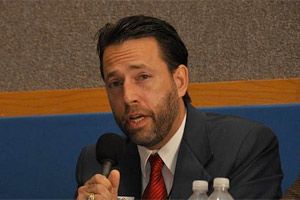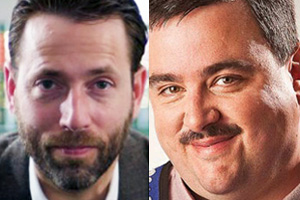The culmination of the Alaska Senate wil be among the most interesting to watch next week, with its three-way battle between tea-party backed Republican candidate Joe Miller, Democrat Scott McAdams, and incumbent Republican Sen. Lisa Murkowski, who is making a write-in bid.
Miller and Murkowski are neck-and-neck in the polls, but McAdams has recently been gaining steam. When I wrote about the Democratic candidate back in August, I noted that while Americans might be tired of hearing about mayors from small towns in Alaska, McAdams and his hometown, Sitka, are a far cry from Wasila. The town is an island off the southeastern leg of Alaska, and at just 8,600 people qualifies as the fifth-largest municipality in the state.
One of those residents, Andrew Miller, writes in to Mother Jones to dish more about the town and McAdams:
As much as Sarah Palin is a product of Wasilla, the ultra-conservative bedroom community of Anchorage, Alaska Democratic Senate candidate Scott McAdams may embody his hometown of Sitka. Some say Sitka is the most liberal community in Alaska. In truth, Sitka is like McAdams, leaning only slightly to the left. It’s fueled by hydroelectric dams, keeps its library open later than anywhere in the state, has rejected corporate retailers, and recently elected a lesbian mayor. However, it’s also a place where voters have twice turned down initiatives to outlaw smoking in bars, where voters consistently elect Republicans to the state legislature, and where the new mayor is a fierce fiscal conservative. Sitka is not Berkeley, but it is a stark contrast to Sarah Palin’s Alaska. Not only is Sitka relatively moderate where Wasilla is a Mecca for Tea Party-types, but Sitka is also the type of small town Palin likes to portray Wasilla as being.
As much as Palin likes to talk about small-town values, a trip to Wasilla is a trip to suburbia. Mayor Palin and Wasilla voters put economic development ahead of everything else, and now the town feels like everywhere else with congested highways and a strip of fastfood chains. Meanwhile, Sitka shoppers buy their groceries at the locally-owned SeaMart and still walk downtown to buy new clothes or see a movie. There are no four-lane highways within 100 miles of Sitka.
Every morning practically half of Wasilla’s working people get into cars and pick-up trucks to drive the hour to Anchorage for work. In comparison, not one person drives out of Sitka in the morning. Sitka is on an island, and while people in Sitka may work on fishing boats, in tourist shops, at the Forest Service, or in offices like anywhere else, the only people who have much of a commute are those who live on surrounding islands and take a boat to town in the morning.
Sitka has been cautious about growth and economic development, and arguably the caution has not hurt the community. Since a pulp mill, which was far and away the town’s largest employer, closed in the mid-1990s, Sitka’s population has held steady thanks to an ever diversifying economy. Sitka now has the most diverse economy in Southeast Alaska, if not the state. Some old timers still say things were better in the mill days in Sitka, but many will beg to differ and note that the waters around town are cleaner, there is less crime, and there is less divisiveness.
Most people in Sitka realize the days of an economy dominated by natural resource extraction are over here, and it’s time to be creative and work together to move forward. McAdams knows that well, and his level-headed campaign is evidence that he knows how to work with people and build consensus – necessary skills in a place like Sitka, but possibly not skills a conservative mayor would learn in Wasilla.












